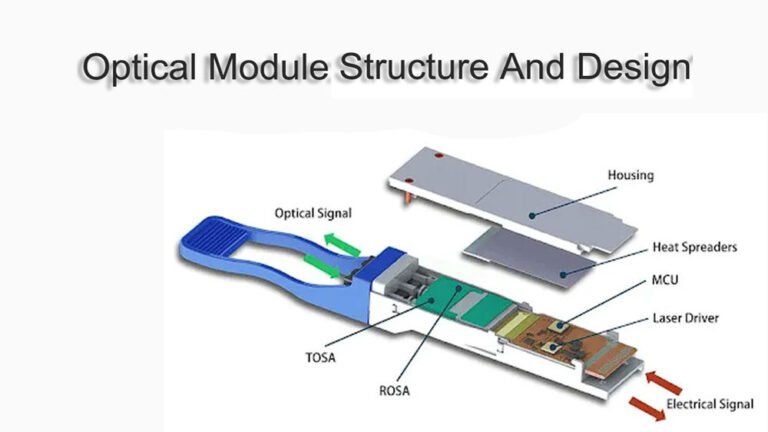Table of Contents
ToggleWDM System Overview
WDM (wavelength division multiplexing) technology is becoming increasingly popular in fiber optic communications. Its key advantage is the ability to transmit multiple signals over a single fiber, allowing networks to expand capacity without laying more fiber.

>> CWDM and DWDM Networks
CWDM (Coarse Wavelength Division Multiplexing) and DWDM (Dense Wavelength Division Multiplexing) are both based on WDM technology, but they differ in terms of wavelength spacing, number of channels, transmission distance, power requirements and cost.
> What is CWDM?
CWDM, or Coarse Wavelength Division Multiplexing, utilizes 18 channels as defined by ITU G.694.2, with wavelengths ranging from 1271nm to 1611nm and a channel spacing of 20nm.
The transmission of a typical CWDM system is mainly concentrated on 8 channels, i.e., 1470 /1490 /1510 /1530 /1550 /1570 /1590 /1610.
The introduction of single-mode fiber based on the G.652.C and G.652.D standards has made it possible to have 10 additional channels centered on 1270 /1290 /1310 /1330 /1350 /1370 /1390 /1410 /1430 /1450.
Typically, Ethernet transceivers based on CWDM technology have 4 channels in the O-band region that are transmitted together over single-mode fiber (SMF) cable.
> What is DWDM?
DWDM, or Dense Wavelength Division Multiplexing, is commonly used in long distance communication systems (>80km) and backbone networks.
DWDM has a narrower wavelength spacing and can support more wavelength channels, typically 40, 80 or even 160 wavelengths.
DWDM systems are suitable for long-distance, high-speed and high-capacity optical communications, such as connecting remote data centers or enabling remote backup and disaster recovery scenarios.
>> How to choose?
When it comes to wavelength-division multiplexing (WDM) technologies, CWDM, DWDM each offer unique advantages depending on the specific requirements of a network. Here’s a comparison of these three methodologies in terms of wavelength spacing, number of channels, transmission distance, power requirements, and costs.
> Wavelength Spacing and Number of Channels
- CWDM (Coarse Wavelength Division Multiplexing): Supports up to 18 channels, with each channel spaced 20nm apart. This wider spacing allows for less precise lasers and reduced costs.
- DWDM (Dense Wavelength Division Multiplexing): Capable of supporting 40, 80, or up to 160 wavelength channels. Channels are spaced closely, at 0.8nm or 0.4nm intervals, allowing for high-capacity long-distance transmission.
> Transmission Distance
- CWDM: Has a shorter reach compared to DWDM due to higher dispersion and attenuation losses at longer distances. CWDM wavelengths are not amplified, limiting their transmission distance.
- DWDM: Capable of transmitting data over long distances by tightly packing wavelengths and using amplifiers to compensate for signal losses. DWDM connections can span hundreds or even thousands of kilometers.
> Power Requirements
- CWDM: Uses uncooled distributed-feedback lasers, resulting in lower power consumption. Uncooled laser diodes are also less expensive.
- DWDM: Uses cooled distributed-feedback lasers that consume more power than uncooled lasers. The cooling system helps maintain stable laser performance and extends the system’s lifespan.
> Costs
- CWDM: Overall, CWDM systems tend to be less expensive due to the use of less precise lasers and the absence of amplifiers. Uncooled laser diodes further reduce costs.
- DWDM: The higher cost of DWDM systems is primarily due to the need for cooled temperature-controlled lasers and cooling systems. However, the increased capacity and long-distance capabilities justify the investment for many networks.
Choosing the right WDM technology depends on your specific network requirements, including the number of channels needed, transmission distance, power budget, and overall cost considerations.
Mvslink is a specialized supplier of optical modules. With a daily production capacity of 3,000 optical modules in our factory, we guarantee the fastest delivery time and the most competitive prices. If you have any needs in this regard, please don’t hesitate to contact us at any time.








